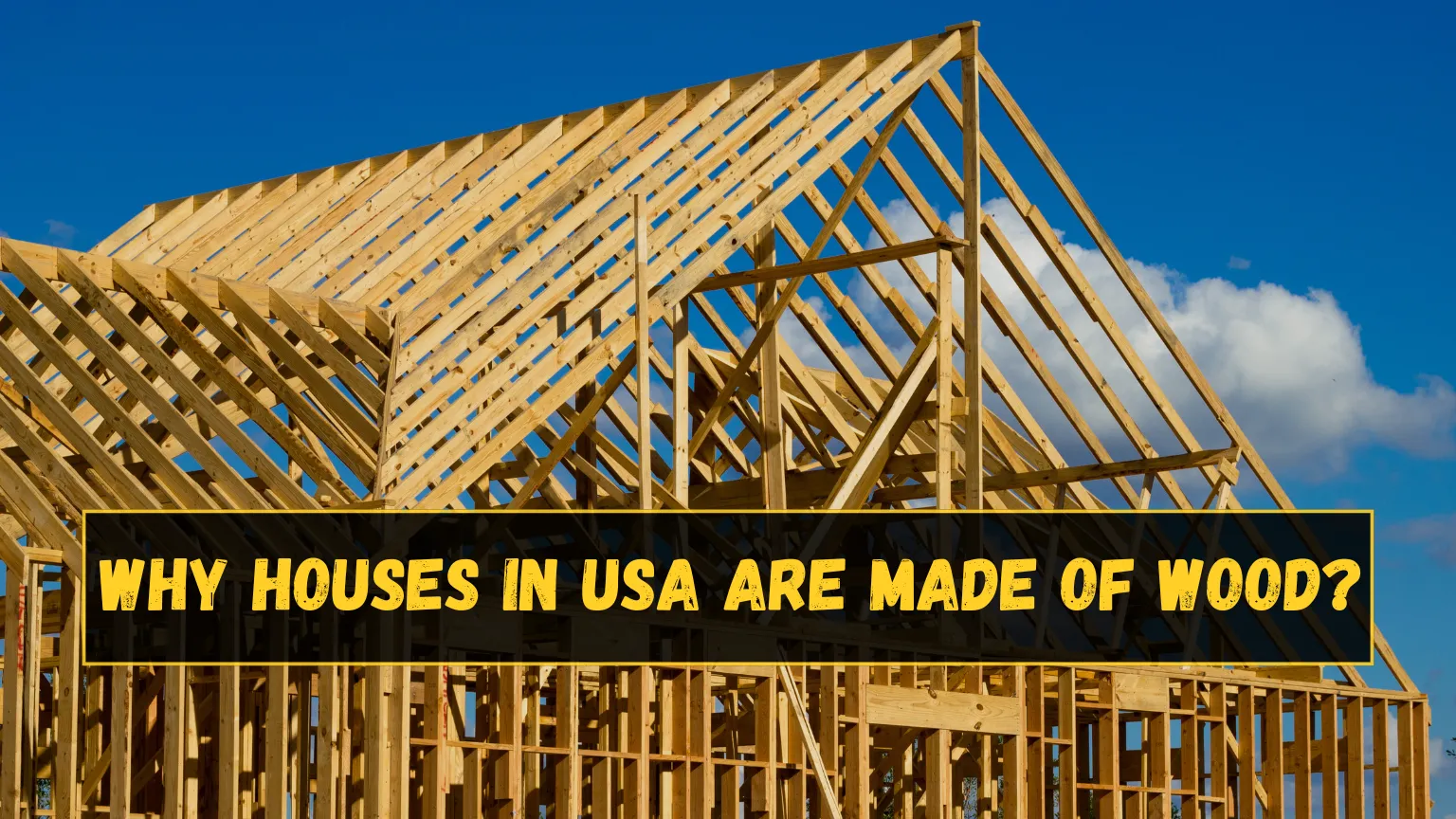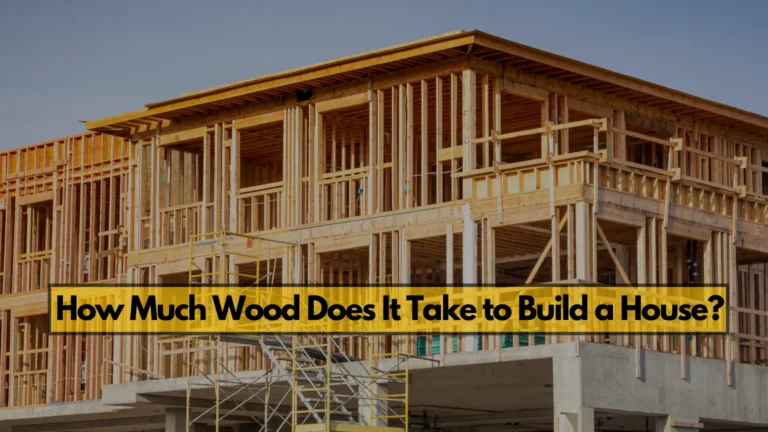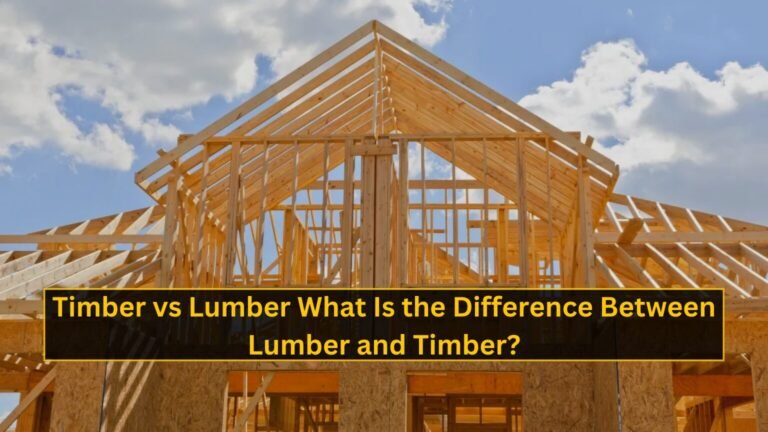Why Houses in the USA Made of Wood?
When you think of homes in the United States, you usually picture rustic cabins surrounded by trees or charming wooden houses in quiet suburban communities. This is in contrast to many other countries, where people build structures predominantly of bricks, stones, or concrete. The USA has a strong distinctive preference for wooden construction. This practice is historically rooted and shaped by pragmatic considerations and has continued to dominate the American housing market.
But why are houses in the US predominantly made of wood? Let’s dig into the philosophies of this preference behind that:
Colonial Origins
In America, the wooden house is a remnant of the colonial past. Vast forests covered the northern landscape when the first settlers landed in North America, and ranging from Europe, timber became the most available raw material, acquiring it far below that of stone or clay for bricks. It readily adapted to the immediate needs of the early colonists, requiring less time than other materials and fewer tools for processing.
The colonists were familiar with European timber framing techniques, which combined with the plentiful local wood supplies to strengthen the foundation, which would later become the foundation for the almost universal use of timber in American buildings.
The Evolution of American Architecture
Over the years, American architecture has evolved to use wood as a basic building material. In the 19th century, balloon framing transformed construction. This technique employed long, lightweight wooden studs nailed together quickly and cheaply to assemble homes. It made many Americans home-owners and, thus, a tradition of wood.
Ten Reasons Why Americans Favour Wooden Homes
In the US, the wooden house is not just a suitable choice; it also represents the country’s culture and shows the architectural philosophy.
Abundant Timber Resources
Miles and miles of trees growing in forests provide unlimited sources of top-quality wood for the country across the Northeast, Pacific Northwest, and Southern states. That is why wooden houses are seen in most parts of the USA. While creating a liberal economy and making wood a profitable building material, timber harvesting emerged as a prominent industry in some places.
Until now, the same trend has been followed for timber harvesting through sustainable forestry practices, so the flow of timber into the country as a mainstream building material is constant. The availability of locally sourced wood renders transport costs and ecological footprints negligible; hence, wood appeals even more.
Adaptability Flexibility
Wood is indeed an ideal material in all kinds of architectural styles and designs, from the American log cabin to today’s minimalist homes. Wood can be shaped, painted, and customized to display individual preferences. Since wood structures are easy to modify, one can also re-design or add features for renovation or extension with minimal cost.
Applicable Climate
Considering the different climates in the United States, wood is an accurate raw material. Wood naturally insulates homes, which stay warm in colder climates and cool in warmer ones. Because of the thermal qualities, less energy is used, allowing for more energy-efficient home design.
Furthermore, wooden homes are ideal for earthquake-prone areas. They are much lighter and more flexible than brick or concrete structures, so they can better accommodate and dissipate seismic forces. Due to this, wood has favored the construction of areas such as California, an earthquake-prone state.
Cost and Affordability
Wood is relatively cheaper when compared to the cost of purchase and construction using bricks or concrete. Cost advantage comes from the easy working conditions offered by timber, in contrast to bricklaying or pouring concrete. Labor costs are reduced, as wood construction requires fewer specialist skills or tools.
Wood buildings are built faster than buildings of other materials. Speedy construction saves overall project costs and allows developers to respond faster to housing needs. This argument would have driven wood construction into the whole spectrum of citizens’ incomes and the American dream.
Construction Speed and Worker Efficiency
In this rapidly changing housing market, the ability to build homes with speed is an enormous advantage in itself. Using modern techniques, the production of off-site components and assembly on-site has sped up the building process with wood. Thus, the new advances within the construction process reduce labor and ensure consistent quality, which makes wood an even more appealing option for separate builders and end users.
Sustainability
Timber is the renewable resource par excellence for its sustainable forest practices guaranteeing continuous supply. Its production differs entirely from concrete and steel, which are huge energy inputs and emit considerable carbon dioxide, lowering its environmental impact; it has a better reputation as an environmentally friendly material owing to its natural carbon sequestering properties. All these factors make it a prime candidate for the origin of green building technology.
Earthquake Resistance
Wood is naturally flexible, and light is advantageous in earthquake-prone states such as California. It is the only material that can dissipate seismic energy by absorbing and distributing it. In contrast, rigid materials, such as concrete and bricks, can perform better for short periods. Thus, wood is a safer construction material for earthquake-prone and tectonic activity-susceptible areas.
Availability of Skilled Labour
A long history of carpentry in wooden structures in the USA has endowed the workforce with skills in timber-based building technologies. Those factors contribute to efficiency and affordability in wooden building projects where expertise is available for various residential and commercial projects.
Aesthetic Appearance
There’s something ageless and homely about wood. A warm natural finish that could suit any taste, rustic or contemporary. Wood houses have always been synonymous with the American dream.
Easy to Transport
It is much lighter and easier to transport because it weighs less than concrete or brick. Some settlers had to bring building materials across hundreds of miles to get things moving. Even now, it plays a significant role in lowering the logistics expenses associated with building projects.
Modern Trends and Sustainability
Changes have gone to the extent of totally transforming the business strategy into a different consumer behavior when popularly brought into the idea of sustainability.

Eco-Friendly Practices
With sustainability being a megatrend, wooden houses emit much sound beyond just being environmentally pleasing, as they are renewable. Timber is renewable and has a sustainable forest management approach, whereby growth is faster than the harvest. Finally, wood is one of the most eco-friendly materials for carbon-sequestering and storing carbon dioxide otherwise destined to enter a greenhouse atmosphere.
Revolution in Wood Construction Technologies
New technologies have continuously increased the possibility of wooden construction techniques. Cross-laminated timber (CLT) is a relatively new material that combines sustainability with strength and fire resistance. It is already being used extensively in developing high-rise buildings. This is a feasibility when it comes to wood in today’s architecture.
The efficiency and appeal of wood are further increased with modular construction methods. These methods expose the action towards wastage and cost, resulting in reduced site schedules that are concomitant with new housing demands at present.
The Myths Associated With the Wooden Houses
While wooden houses are indeed the choice of many, many misconceptions surround their use. Let’s look at some of the most common myths:
Durability
There is a belief that wooden houses are less durable than brick or concrete homes. This is absolutely false because, with appropriate maintenance, a wooden house can last for hundreds of years. Today, modern treatments and finishes on wood protect these from rotting and offer excellent pest resistance and moisture protection, all enhancing the wood’s longevity.
Fire Risks
Another myth goes that wooden houses are more fire-prone than any other building type. The fact that wood is a combustible material does not remove the building codes and particularly fire-resistant treatments that reduce the risk of fire spread. It is found in these homes, which are typical of fire prevention materials and techniques like sprinkler systems.
Vulnerable to Natural Disasters
Those who are skeptical will claim that wooden homes are not resilient enough to survive the fury of tornadoes or hurricanes. Admittedly, every structure suffers under the storm’s power; however, code-built wooden houses are added with reinforcements to resist the strongest winds of nature. They can absorb impact without failing severely due to flexibility.
Final Thoughts
The American wooden house is a testament to the material’s affordability, adaptability, and usefulness. Wood is the foundation of American construction, from its historicity to its modernity. However, some of the misconceptions regarding longevity and safety remain. The contemporary improvements in technology and sustainable practices keep convincing modernization that this wood estate remains invaluable in housing provision.
However, wood takes into account its environmental friendliness and makes it a future material, making it the step towards greener construction in this country. Whether it is a typical suburban home or a magnificent skyscraper, wood structures are the pinnacle of American architecture, fusing the old and the new.
Frequently Asked Question
Are Wooden Houses Long-Lasting?
Well, wooden houses can last for centuries when properly maintained. Wood treatment today wards off pest attacks, rot, and moisture from causing damage.
How Do Wooden Houses Hold up To Earthquakes?
Compared to other materials like brick or concrete, wood houses are fairly flexible and lighter. Therefore, they are more amenable to Earthquake effects. This enables the forces to be absorbed and dissipated by these structures, thus reducing damage to them during earthquakes.
Are Wooden Houses Cheaper than Brick or Concrete Houses for Construction?
Well, wood is definitely the cheapest of all, that is, to procure and construct. Since it requires the least amount of labor and specialized tools, the cost is comparatively lesser, hence making wooden houses more affordable for many Americans.
Do Wooden Houses Demand More Maintenance?
Wood homes are often routinely maintained, such as sealing, painting, and pest inspection. However, this is amenable because it really adds value to the durability of the house.

Tony Cummins began his career as a carpenter in a sawmill, where he learned the ins and outs of cutting and processing wood. Over the years, he honed his skills and gained vast knowledge about different types of lumber and their uses. After many years of working directly in the industry, he decided to start his company for preparing lumber takeoffs to help contractors.
















